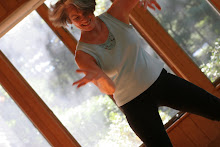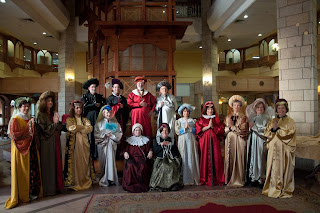|
Sefat, Tiberias,
and into Jerusalem
|
On
Tuesday morning, December 6, we left Haifa for a long day of sightseeing in
Sefat, Tiberias, and along the West Bank, finishing with an after-dark entry
into Jerusalem from the east.
On
November 29, 1947, the UN voted to partition Palestine to allow for contiguous
states of Israel and Palestine. Jerusalem
would be international. The new state of
Israel would be Tel Aviv, the Negev Desert, and some areas along the coast.
There was no connection between the new state of Israel and Jerusalem. Religious Jews rejected the proposal because
Jerusalem was not included. Arabs
rejected it because they wanted the whole country for themselves. When the
British moved out, the War of Independence began immediately. After the Israeli victory, Israel unified the
city of Jerusalem. Palestinian Arabs
are citizens of Jerusalem, but not citizens of Israel.
There
are three groups of Arabs:
- Israeli Arabs with full
citizenship, right to vote, right to run for Parliament
- Jerusalem Arabs
- West Bank Arabs
All
these Arabs speak the same language, dialect, accent. There are many differences in political,
social, and educational benefits. Arabs
in Category 2 and 3 can become 1 by marrying an Israeli Arab, and thereby get health
insurance, a free funeral, social security, and education in Israeli public
schools.
Kibbutzim
are undergoing a capitalist revolution. Now outsiders can buy a house and live on the
kibbutz without being a member of the collective. In some kibbutzim, residents work outside,
contribute their salary to the kibbutz, but receive an allotment from the group
commensurate with their contribution.
Lower
Galilee 1000 feet on the left, Upper Galilee 2500 feet on the right towards Sefat. The best olive oil in the region comes from
here. Mount Hermon at 9000 feet is covered
with snow.
Who
wrote the Zohar? Rabbi Moshe Sierra Leon
of the 13th century wrote it, but it is attributed to Simon ben Barkai. Why?
Mysticism
is more important in bad times. In 1492 Jews went to Turkey, among other
locations, after the expulsion from Spain and Portugal. A mystic community developed in Zefat led by
Joseph Caro, author of the Shulkhan Aruch. Rabbi Yitzhak Luria took Zohar to the next
level. Torah study, prayer, gemilut chasidim
(deeds of lovingkindness) make tikkun olam (repair of the world).
The teachings of the Zohar explain that our
task in life is what is hardest to do. Selfishness,
gluttony, violence, shyness might be the focus of your life’s mission, depending
on what is hardest for each one to do. We
are all a part of God. Just as a tiny
virus can make your body sick, you as a tiny individual can have an effect on
God, for good or for ill. Your job is to
improve yourself and thereby improve the whole of mankind.
250,000,000
trees have been planted since Mark Twain travelled in the region and reported that it was the ugliest place on earth. Water is pumped up 300 feet from Lake Tiberias
before it is distributed to the rest of the country. Desalination of water from the Mediterranean accounts
for 25% of use. 75% of household water
is recycled. Another country with the
next highest rate of recycled household water is 35%.
Our
first stop was in Sefat. We had some
time for sighseeing of Sefat synagogues and shopping in the beautiful galleries
full of Jewish art, textiles, jewelry, and other delights. I stopped for fresh pomegranate juice. My friend Leslie from Chicago wandered out of
a shop alone, made a wrong turn, and was lost.
The good news was that she had a cell phone and called me. With the help of Rabbi Weiner and several
kind bystanders, we were able to find each other again. During that interval, we missed a presentation
about kabbalistic art from a local artist which the rest of our group saw.
Our
next stop was in Tiberias, at the Dona Gracia Hotel. Beatrice de Luna’s family were new Christians
in Portugal. Hanasi was the king. A Portuguese princess wanted to marry the
prince of Spain. During
this time Hannah Nasi (living from 1510-1569) found out she was a Jew.
The story was told to us by a guide at the hotel who spoke English in such a charming way. An
older successful Jewish merchant Francesco Mendes said to Hannah Nasi, “Do you marry me?” She said, “Who are you?” He knew about Hannah Nasi because the
Marranos found information among themselves.
They married and soon Dona Gracia Mendes found herself a wealthy widow. Her sister Reina asked for help in marrying. Hannah arranged a marriage with her
brother-in-law Diego Mendes. At his
death, Diego left all his holdings to Dona Gracia because of her proven ability
to handle finances. Her sister got
nothing, wanted revenge.
Don
Joseph Nasi was a nephew, married the daughter of Dona Nasi. The sisters were in prison because of sister
Reina’s actions. They asked Don Joseph
Nasi to meet with Suleiman the Magnificent of Turkey, to ask him to release the sisters. He did.
Now Hannah Nasi was willing to help the Jewish community, paid to print the
Shulkhan Aruch. She also supported the
work to translate the Bible into Spanish.
She
moved to Istanbul, asked for an audience with Suleiman the Magnificent. She
came to his palace with 40 horses. She asked for a peaceful place for the
Jewish people, Tiberias. Tiberias was a
place of earthquake, heat, disease, criminals. The valley, second lowest place in the world, was
209 meters under sea level. She obtained
a 99 year lease. She sent people to build walls, plant mulberry trees for
silkworms. No one came. She died at the age of 59.
She
was forgotten for 400 years. The Ghost of Hannah Mendes, memorialized in Naomi
Ragen’s 2001 novel, was the hero of songs and poems. Two streets were named
after her, one in Tiberias, one in Haifa. Herzl has 120 streets.
Many
rabbis chose to be buried in Tiberias. Dona Gracia was the first righteous one
to come alive again, to go from anonymous to famous. Terminal Palace Hotel in Tiberias, named
because people came to Palestine to die, changed its name to Dona Gracia
because they copied the name of the street it was on. Now people come from far and wide to view
tableaux of the story of Dona Gracia complete with authentic costumes of the
period. Our group was treated to an
experiential learning activity of dressing up in costumes of the period of Dona
Gracia.
News
in Israel is the water missing from the sea of Galilee, now down 12 feet from
normal levels, because of water pumped out for agriculture and domestic use
throughout the country.
Our
next stop was at the Jewish center of learning created by Rabbi Yehuda Hanasi,
a leading scholar of the period who was the first to write down the
Mishnah. His center at Tzipori was an
important center of study in the first century after the destruction of the
second temple by the Romans in the year 70 CE.
Notice the mosaic floor of the learning center which features a
depiction of the zodiac, and a mural depicting dyadic study in the center.
From there we drove along the banks of the Jordan River, through the vast and abundant agricultural fields of the West Bank, around the city of Jericho and into Jerusalem. We stopped at a lookout before entering the city in order to see the layout of the Old City and surrounding areas. Each time I have been to Jerusalem, this first glance of the city is a stunning site, so full of myth and meaning, of memory and of hope.
After arriving in our comfortable rooms in the Leonardo Plaza in Jerusalem where we were going to stay for 5 days, we felt already so much at home in the city. Several of us made the short walk up King George Street to Ben Yehuda Street where we found a dairy meal, good conversation, and an Internet connection for touching base with home.







0 Comments:
Post a Comment
Subscribe to Post Comments [Atom]
<< Home